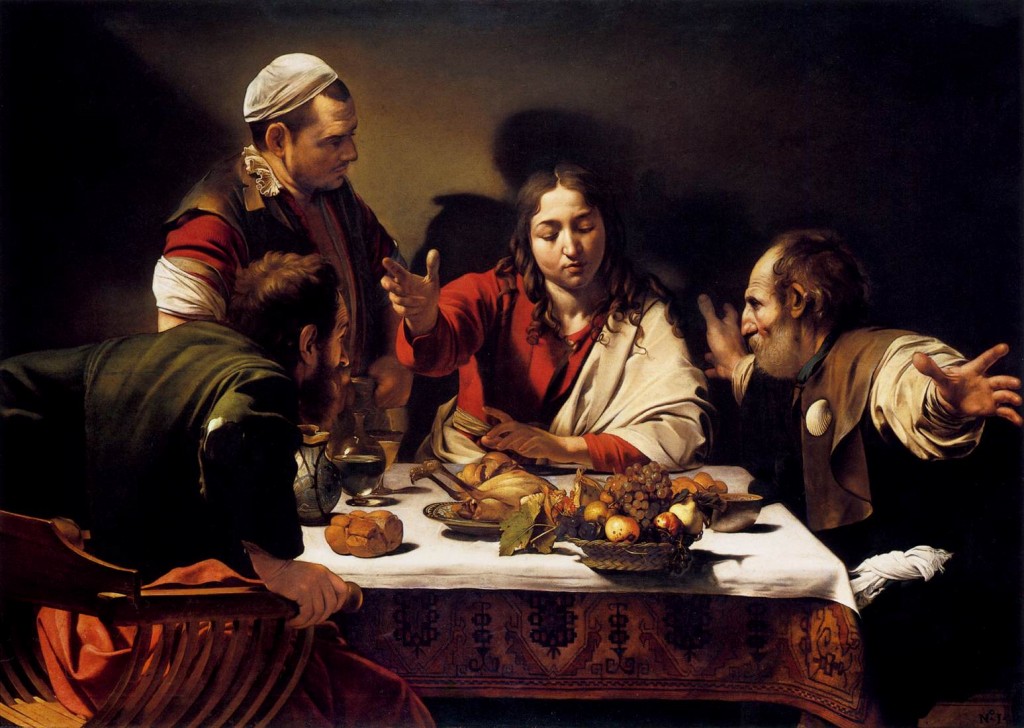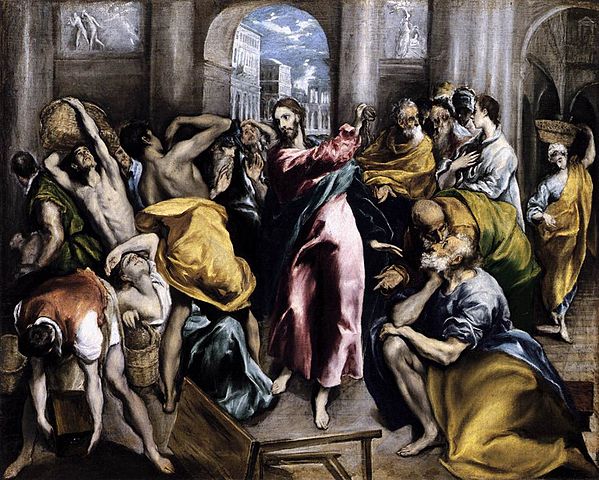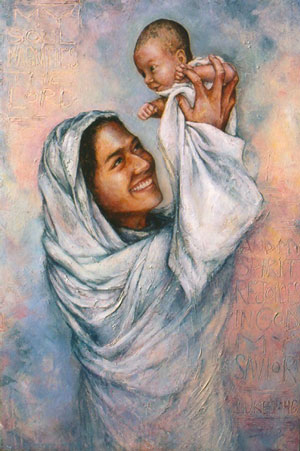Sermon preached on 18 May 2014 at Duston URC. Text: John 14:1-14. See also my blog post from 2013 on John 14:6.
So
I began talking with the children about what it means to walk along with Jesus,
and I want to go into that a bit more – about what it means to live in the way
of Jesus. This is a long and quite complex passage, rich with imagery and
ideas. There’s material for a whole series of sermons in these 14 verses. So as
I did earlier, I’m going to mostly focus on one single verse – though drawing
on ideas from the rest of the passage.
Now there are probably bits of the Bible you like
more than others. Some parts really hit the spot for you, other parts make you
much more uncomfortable. And for me, verse 6 of this passage – “I am the way,
the truth and the life, no-one comes to the father except through me” – puts me
straight into the discomfort zone. I’ve carried this verse with me for perhaps twenty years, looked at it
again and again from different angles. I find it really fascinating but also
quite disquieting, with this sense of exclusivity in the second half. It’s a
verse beloved of tracts and those posters you used to see at railway stations.
It could be seen as closed-minded, creating an in-group and an out-group,
rather self-satisfied. Does that mean all the Muslims and the Hindus and Jews,
not to mention the atheists, have no chance of finding their way to God? Some
Christians would say yes, that’s exactly what it means; others would want to
interpret it differently and point to the fact that Jesus said that there are
many dwelling places in his father’s house. I’m not sure what I think about
this subject, but I think the verse as a whole and indeed the passage as a
whole is so rich and interesting that it’s worth working with it for a while to
see where it takes us.
Let’s
step back a moment. This passage is part of John’s gospel in what’s sometimes
called the farewell discourses. It happens at the Last Supper, soon after Judas
leaves the others to go and betray Jesus. Before the events of the Passion
unfold, Jesus gives his disciples a long set of final teachings, interspersed
with dialogue from the disciples. They begin with Peter’s declaration that he
would lay down his life for Jesus, and Jesus’ prophecy that Peter will betray him
three times. And immediately follows the passage we’ve just heard. Jesus says
he’s going to his Father, that there’s plenty of space for the disciples to
come too, and that they should put their trust in him.

And then comes
Thomas, the original TomTom. Good old Thomas, just as much of a believer and a
follower of Jesus as the other disciples, but who was always keen to have
things nailed down and certain. The man who’s become known in history as
Doubting Thomas, but really was just a bit too keen on clear evidence. Here
he’d like a satnav please, telling him the way and when he’ll reach his
destination. And in response, Jesus speaks two words, which for a Jewish ear
are incredibly resonant.
What Jesus says is “I AM”. John’s gospel has
several of these I AM sayings – I AM the light of the world, I AM the bread of
life and so on. In Greek, the phrase is particularly emphatic, a strong way of
saying who you are; but for Jews it’s dynamite, because it’s exactly God said
to Moses from the burning bush in the book of Exodus. When Moses asked God his
name, God said “I am who I am” and to tell the Israelites that “I AM has sent
you”. It’s the basis for the Hebrew name of God, Yahweh, so holy that to this
day devout Jews won’t say it aloud. So in using this phrase, Jesus was making a
really strong claim about himself, and his connection to God.
And then he goes into more
detail about what he’s saying about himself, in these three words. He says that
he is the way, that he is the truth, and that he is the life. I’m not entirely
convinced these are separate ideas, or even that they’re meant to be. But
they’re individually very interesting, and so I want to look at each in turn
and what they can tell us about being a follower of Jesus.
So the first thing he calls himself is the Way –
the path, the road. He doesn’t say he’ll tell people the way to where he’s
going, he doesn’t say he’ll show it to them. He says that he himself is the
way. The first
Christians were known as the people of the way, and the idea of the ‘way’ was a familiar one in Jewish
thought; Moses used it, as did the prophet Jeremiah when he said “Stand
at the crossroads, and look, and ask for the ancient paths, where the good way
lies; and walk in it, and find rest for
your souls”. As I said to the kids,
choosing the right path is very important. But these are all about the way as
something external, something physical. By saying that he himself is the way,
Jesus makes the idea very personal. We will know the way to the Father by
following his example, by living our lives as he did. It’s not about what you
believe, or pious statements of faith. It’s about how you live your life.
 There’s
a wonderful poem by a Spanish poet, Antonio Machado, who wrote: “Traveller, there is
no road. We make the road by walking.” Paths are fragile, like the one across these
sand-dunes I saw once in California. And Jesus tells us that the only path that
matters is one that we can’t see, that we make ourselves by the way we lead our
lives. So how do we live our lives? Another quote from a traveller, this time the founder of the
Quakers, George Fox, a travelling preacher who did a lot of walking, and told
said that we should: “
There’s
a wonderful poem by a Spanish poet, Antonio Machado, who wrote: “Traveller, there is
no road. We make the road by walking.” Paths are fragile, like the one across these
sand-dunes I saw once in California. And Jesus tells us that the only path that
matters is one that we can’t see, that we make ourselves by the way we lead our
lives. So how do we live our lives? Another quote from a traveller, this time the founder of the
Quakers, George Fox, a travelling preacher who did a lot of walking, and told
said that we should: “Be patterns, be examples in all countries, places,
islands, nations, wherever you come, that your carriage and life may preach
among all sorts of people, and to them; then you will come to walk cheerfully
over the world, answering that of God in every one.”
And
then we move on to Jesus’ second word. He says he is the Truth. Now we live in a postmodern world where truth
is a slippery concept, where my version of the truth is just as good as your
version of the truth. We have more information than ever before in history, and
that information sometimes clouds what is the truth. But in the past,
uncovering the truth about something has always been important. And again Jesus doesn’t
say he’s going to show us the truth, or bring us the truth, or lead us to the
truth. He says he is the truth. Many
people proclaim that they have a message of some sort which is true for the
world, and yet they live quite a life which shows that is not true within their
own lives. It’s something we’re all guilty of at times. But Jesus proclaimed
that he was the truth, and he lived a life of truth and integrity. And he said
something else amazing about truth: “you will know the truth, and the truth will set you free”. So much
that goes wrong in the world comes from half-truths, rumours and outright lies
that people tell each other or we tell ourselves. But truth brings freedom in
it, and by following the one who embodies truth, we find freedom.
The
third of Jesus’ words is my favourite of all. He says he is the Life. Again,
not that he shows us life, or tells us about life, but that he himself is Life.
The word ‘life’ is absolutely central to John’s gospel. It opens with the
statement that “In him was life, and the life was the light of all people”.
Jesus tells us that he is the bread of life, that those who follow him will
have the light of life, that those who believe in him will have eternal life.
And it’s in what to me is perhaps the most important verse of the whole Bible [slide 12], also in John’s gospel, where
Jesus says “I have come that they may have life, and have it abundantly”. Jesus
didn’t come to bring us rules, he hasn’t come to convince us of our sin, to rub
our unworthiness in our faces. He has come to bring us LIFE.
But
this is not just any old life. This is not the boring and mundane life, the
grey life of the 9-5 drudge with little sense of life. This is life in
abundance, life lived to the full. Nor is it about greed or excess. It’s not
about taking from others. It’s about living a life that is full of joy, that is
suffused with an awareness of God’s love. The American preacher and author John
Ortberg talks about becoming the people God created us to be. He asks the
question: “what do you do that makes you feel fully alive?” This isn’t about
momentary pleasure, the sort of kick you get from eating chocolate or drinking
your favourite tipple or watching a mindless but fun television programme. It’s
about deep satisfaction. What makes us feel fully alive differs for each of us,
but I believe that Jesus came to show us that this kind of life, and richer and
deeper, is possible right here and right now.
So
Jesus tells us that he is the way, the truth and the life. He is the one who in
his own person embodies the generosity, abundance and integrity that he
promises to the disciples and to any who are prepared to follow him. Because he
asks us at the start of the passage to put our trust in him. Sometimes that
verse is translated as “believe in me”, but really it’s better seen as putting
our trust in Jesus, like one of those trust exercises where you lean backwards
and let go and trust that someone will catch you.
So
how can we live like this? How can we put our trust in Jesus as the way, the
truth and the life? How can we really be followers of Jesus? Isn’t it rather
presumptuous of us? Well, I think we need to start by remembering who we are.
We are creatures who are made in the image of God. George Fox talked about answering that of God in
everyone, which to me means loving each person we encounter and working for
their good, as well as for the good of all others around the world. But it also
means seeing that of God in ourselves, of recognising the image of God inside
ourselves, of being prepared to be called into that abundant life which awaits
all of us who choose it.
 The
Protestant reformers talked about the priesthood of all believers. They believed passionately
that we don’t need intermediaries between us and God, that every Christian is
able to find their way to the father through following the way of Jesus and
with the assistance of the Holy Spirit. We started the service with the words
of Peter that “you are a chosen race, a royal priesthood, a holy nation, God’s
own people”. This is an amazing promise, but it’s also a bit scary and I think
we often dodge around it and don’t take it quite seriously. If we are made in
the image of God, if we are followers of the way of Jesus, then we really can
trust that it is possible for us all to be priests. And Jesus promises us that
if that happens, then we will do the works that he did, and even more.
The
Protestant reformers talked about the priesthood of all believers. They believed passionately
that we don’t need intermediaries between us and God, that every Christian is
able to find their way to the father through following the way of Jesus and
with the assistance of the Holy Spirit. We started the service with the words
of Peter that “you are a chosen race, a royal priesthood, a holy nation, God’s
own people”. This is an amazing promise, but it’s also a bit scary and I think
we often dodge around it and don’t take it quite seriously. If we are made in
the image of God, if we are followers of the way of Jesus, then we really can
trust that it is possible for us all to be priests. And Jesus promises us that
if that happens, then we will do the works that he did, and even more.
To
follow Jesus is to be in relationship with the one who in himself personified
the way, and the truth, and the life; and who calls us to have those things now
with him and for ever more.
Amen.
God sent Jonah a tree















.jpg)





